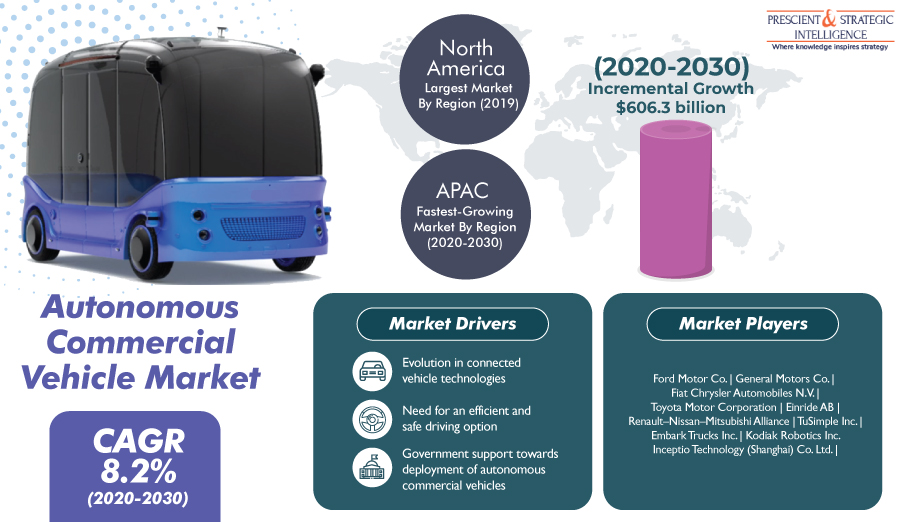With the growth of the manufacturing and retail industries, an efficient means to transport goods from one place to another is becoming more important every year. Similarly, the burgeoning population, which the United Nations (UN) expects to touch 10.9 billion by 2100, is propelling the need for passenger transportation. With these factors, the number of large commercial vehicles, including trucks and buses, is rising. However, these vehicles are often part or cause of road accidents because they are slightly difficult to maneuver, and drivers aren’t always able to see what is behind them.

As a result, with the surging incidence of road accidents, which kill 1.35 million people each year, as per the World Health Organization (WHO), the need for making transportation safer is increasing. P&S Intelligence cites this factor while projecting an 8.2% CAGR for the autonomous commercial vehicle market during 2020 and 2030. It is now well known that most of the accidents are caused by humans themselves, and few due to machine/vehicle system error. As a result, in several countries, the adoption of functionalities that can aid the human driver or even completely replace them while driving has been mandated.
For instance, the National Highway Traffic Safety Administration (NHTSA) under the U.S. Department of Transportation has made the integration of electronic logging devices (ELDs) in all trucks necessary. Another among the most-popular systems in this regard is the advanced driver-assistance system (ADAS), which includes functionalities such as automatic emergency braking, anti-lock braking, adaptive cruise control, and automatic parking. Any vehicle with any of these functionalities is classified as a level 1 semi-autonomous vehicle, which is why more semi-autonomous trucks and buses than fully autonomous ones have been sold around the world till now.
Moreover, fully autonomous vehicles are not available for sale currently; they are still under the development and trial stage. Level-4 autonomous vehicles will be available in 2023 and level 5 variants only in 2025. On the brighter side, the current technological and regulatory landscape is quite conducive to the development of fully autonomous commercial vehicles. Two of the essential technologies for such vehicles — vehicle-to-vehicle (V2V) connectivity and vehicle-to-infrastructure (V2I) connectivity — have already been developed, and they are being integrated on a wide scale in passenger cars.
Similarly, an increasing number of countries are tweaking their laws and making accommodations for the operation of self-driving vehicles. For instance, since 2011, 29 American states have made regulatory provisions for such vehicles, which are also a priority for the European Union (EU). The major countries where fully autonomous vehicles are being tested or have been given the in-principle operational approval are the U.S., Germany, Canada, Spain, France, the U.K., Sweden, the Netherlands, and Italy.
Browse detailed report on Autonomous Commercial Vehicle Market Business Strategies, and Regional Outlook